Also in the Jews of Yemen Docuweb:
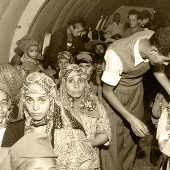
Operation 'On Wings
of Eagles'
________________
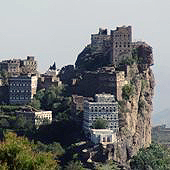 A Brief Background
A Brief Background
About Yemen
________________
 Kinneret and Yemenite
Kinneret and Yemenite
Pioneers
________________
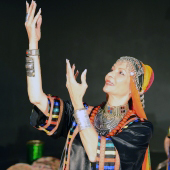 Customs, Culture and
Customs, Culture and
Folklore
________________

Yemenite Jews &
American Colony
________________
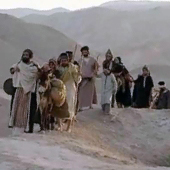 When did the Jews
When did the Jews
Arrive in Yemen?
________________
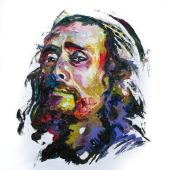 Relations with
Relations with
their Local Neighbors
________________
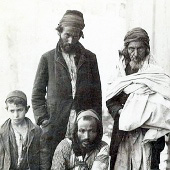 Early Immigration
Early Immigration
________________
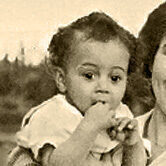
Missing Children
Affair
_______________
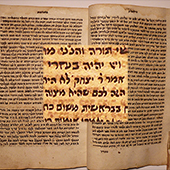 Jewish Scholars
Jewish Scholars
of Yemen
________________
 Links with
Links with
Other Jewish Centers?
________________
 Personal Stories
Personal Stories
________________
| Were there links with Jewish Centers Outside of Yemen?
Yemen was relatively distant from the established Jewish community centers in Israel, Baghdad, Persia, Syria, Egypt and Europe. Nevertheless, links among them were kept to a certain degree throughout the centuries.
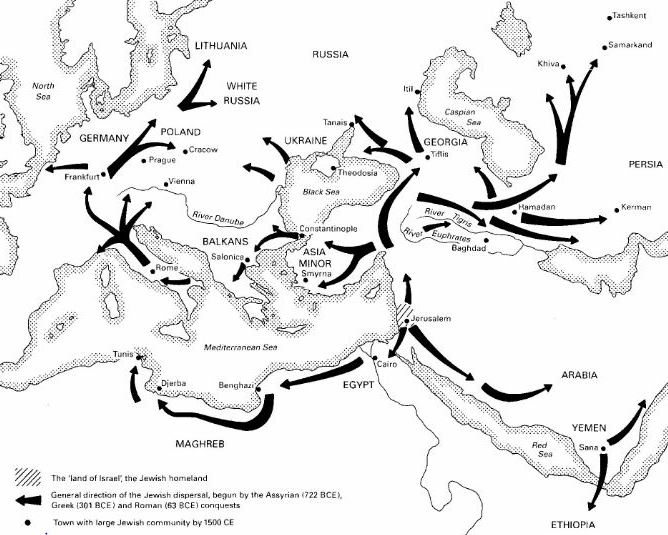
Some Related Comments from the Bible
The Bible mentions Yemen and Sheba a few dozen times in relation to King Solomon. These include references to the Queen of Sheba and the extensive commercial activities between Sheba and the land of Israel. Prophets like Isaiah (Yeshayahu), Jeremiah, Zechariah and Ezekiel, mention Yemen and Sheba, Teima, Uzal (Current Saana) in their prophecies. The book of Job (chapter 6, verse 19) mentions caravans of Teima and the companies of Sheba waiting for them.
One interesting comment is from the prophet Isaiah (~700 BCE) who lived during the period of the First Temple. In chapter 21 verse 14 he mentions the inhabitants of the city of Teima (in Heajaz). This city was populated with a strong Jewish community. (See Wysinfo Jews of Yemen – History – Relations with their Local Neighbors…).
Isaiah said that the people of Teima supplied water and food to those who escaped from the horrors of war. (During Isaiah’s time the Jewish Kingdoms of Israel and Judea fought against the Assyrian Empire. These wars ended with the destruction of the First Temple in Jerusalem).
Isaiah chapter 21 verses 14,15
| Unto him that is thirsty bring ye water! The inhabitants of the land of Teima did meet the fugitive with his bread. | .לִקְרַאת צָמֵא, הֵתָיוּ מָיִם; יֹשְׁבֵי אֶרֶץ תֵּימָא, בְּלַחְמוֹ קִדְּמוּ נֹדד |
| For they fled away from the swords, from the drawn sword, and from the bent bow, and from the grievousness of war. | .כִּי-מִפְּנֵי חֲרָבוֹת, נָדָדוּ; מִפְּנֵי חֶרֶב נְטוּשָׁה, וּמִפְּנֵי קֶשֶׁת דְּרוּכָה, וּמִפְּנֵי, כֹּבֶד מִלְחָמָה |
Expand to view a few other selected phrases from the bible....
Jeremiah chapter 6 verse. 20 20 To what purpose is to Me the frankincense that cometh from Sheba, and the sweet cane, from a far country? Your burnt-offerings are not acceptable, nor your sacrifices pleasing unto Me. כ לָמָּה-זֶּה לִי לְבוֹנָה מִשְּׁבָא תָבוֹא, וְקָנֶה הַטּוֹב מֵאֶרֶץ מֶרְחָק; עֹלוֹתֵיכֶם לֹא לְרָצוֹן, וְזִבְחֵיכֶם לֹא-עָרְבוּ לִי.
Isaiah chapter 43 verses 5 and 6 5 Fear not, for I am with thee; I will bring thy seed from the east, and gather thee from the west;
6 I will say to the north: 'Give up,' and to (literal translation: Yemen) the south: 'Keep not back, bring My sons from far, and My daughters from the end of the earth;
Meaning: These verses of Isaiah are referring to the gathering of the exiles from 4 corners of the earth.
The phrase "and to Yemen, "Do not refrain..." is saying to the Jews of the south not to hold their sons and daughters back in the South, in Yemen, but to send them to the land of Israel.
ה אַל-תִּירָא, כִּי אִתְּךָ-אָנִי: מִמִּזְרָח אָבִיא זַרְעֶךָ, וּמִמַּעֲרָב אֲקַבְּצֶךָּ.
ו אֹמַר לַצָּפוֹן תֵּנִי, וּלְתֵימָן אַל-תִּכְלָאִי; הָבִיאִי בָנַי מֵרָחוֹק, וּבְנוֹתַי מִקְצֵה הָאָרֶץ.
Havakuk chapter 3 verse 3 3 God cometh from Teman, and the Holy One from mount Paran. Selah His glory covereth the heavens, and the earth is full of His praise. ג אֱלוֹהַּ מִתֵּימָן יָבוֹא, וְקָדוֹשׁ מֵהַר-פָּארָן סֶלָה; כִּסָּה שָׁמַיִם הוֹדוֹ, וּתְהִלָּתוֹ מָלְאָה הָאָרֶץ.
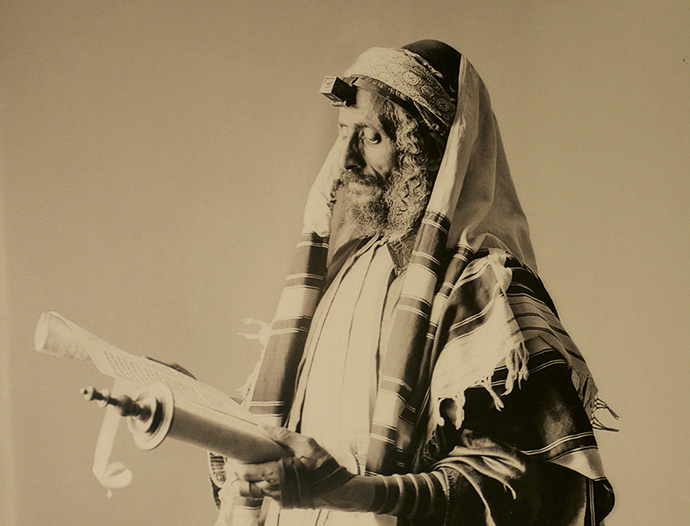
During the Talmudic Period ~200 to ~500 CE.
Expand for an answer to - What is the Talmud? .... The Talmud is a base of knowledge that contains the Mishnah and the Gemara
During the early centuries of the Common Era, Jews were able to promote their businesses by having connections with other Jewish communities elsewhere. Consequently they gained wealth and substantial influence. This reached a point, in around 380 CE, where a ruler of the Ḥimyarite Kingdom (115 BC to 520’s CE) in Yemen accepted monotheism and converted to Judaism together with his subordinates. This Kingdom, in its early years, conquered the Saba, Qataban and Hadramaut kingdoms. It fell after the invasion by the Kingdom of Aksum during the 520’s CE. (See Wysinfo Jews of Yemen – A Brief Background About Yemen…)
Beit-She-arim – Burial cave for Jews from Yemen from early 3rd Century CE
Beit-Shearim, defined by UNESCO as a world heritage site since 2015, is a town in the lower Galilee. It was founded by Herod the Great in the 1st century CE. The town received this title owing to its vast necropolis, carved out of soft limestone. It contains dozens of burial cave systems with catacombs, sarcophagi and walls that are decorated with detailed symbols, figures as well as inscriptions in Hebrew, Aramaic, Palmyrene (an Aramaic dialect), and Greek. These document two centuries of historical, cultural and fine art activity unparalleled in any other Jewish cemetery elsewhere. The town was destroyed in the 4th century by an earthquake.
After the destruction of the 2nd Temple in 70 CE., the supreme legislative council of the Jewish people, the Sanhedrin, moved to Beit-Shearim. This then became an important center. The Mount of Olives in Jerusalem was always the desired burial location for Jews in Israel and the Old World. But, when Jews were banned from going there after the destruction of the Temple, Beit-Shearim was a good alternative.
In 1937 the archaeologist, Professor Benjamin Mazar, revealed a system of tombs, at Beit She’arim, belonging to Jews of the ancient Kingdom of Himyar in Yemen. This system dates back to the early 3rd century CE. This discovery is significant because it tells us there were connections between Yemen and Israel during the early centuries CE. It also tells us that Jewish communities in Yemen, at that time, had the financial means and logistics to have their relatives buried in what was then considered a prestigious place – the land of Israel. This was the land of their forefathers and near the catacombs of the Sanhedrin.
Expand to read - What is The Sanhedrin?....
Many of these Jews were probably wealthy merchants since Yemen was located in a strategic point of the south east Arabian Peninsula. This location served as an essential passage way for commerce of spices and goods between the Far East and Europe.
In one of the caves in Beit She’arim archaeologists found writing on a gravestone. The writing, in Greek and ancient South Arabian script, said “Menachem.. Prince of Himyar’ .. or “Elder of Himyar’.
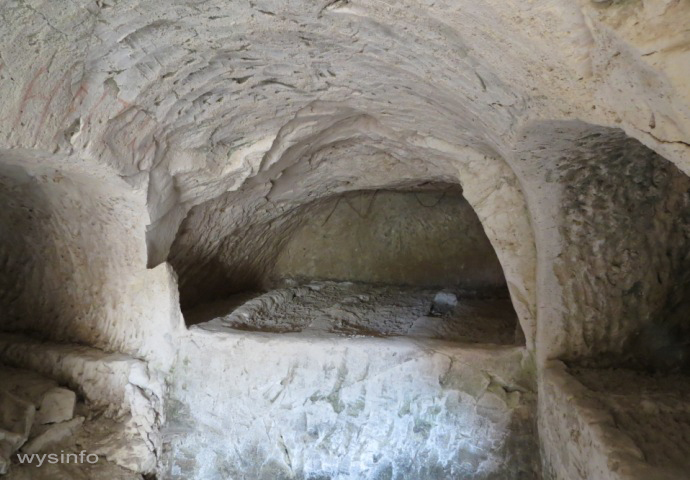
The connection of Jews in Israel to those in Yemen is also reflected in Christian sources. For example, with the words of Bishop Shimon of the House of Arsham, (“Eretz Kinarot”, Hirshberg, p-81). He asks the Christian authorities in Israel to approach the Jews of Tiberias, which was then an important Jewish center. He wanted them to convince the Jews to stop helping King Yosef-Du-Nuas of Himyar in his war against the Christian Kingdom of Aksum (~525 CE).
Connections of Yemenite Jews with other Jewish Communities during the Geonim Period ~Early 7th to 11th Century CE.
Expand to read - Who were the 'Geonim'?.... ‘Geonim’ were the presidents of the two famous Babylonian Talmudic Academies of Sura and Pumbedita. They were considered to be the spiritual leaders of the Jewish community worldwide in early Medieval age.
In the early 7th century CE the newly-born Islamic religion appeared in the Arabian Peninsula. Within a short period, it expanded throughout the Middle East. It occupied a vast area from the Peninsula up to what is today Iraq, Turkey, Egypt, North Africa and Spain. Connections between the different countries, now under one ruling entity, became easier. The absence of additional administration simplified the process when crossing borders. As a result, connections improved between the Jews of Yemen with Jewish centers in Iraq (Babylon), Egypt and Israel.
Babylonian Vocalization (Nikkud Bavli) in Yemen
The Babylonian Vocalization was used by the Jews of Yemen and proves connections they had with the community in Babylon
Expand for an answer - What is the Babylonian Vocalization.... The Babylonian Vocalization (In Hebrew – ‘Hanikkud Habavli’) is a system of graphic symbols and dots written above the Hebrew letters in order to indicate the proper pronunciation of the words. It was created around the 6th century CE and reached it’s peak during the 7-8 centuries. It’s decline started in the 9th century CE with the diminishing influence of the Babylonian Jewish community and the rising leadership of the one in Egypt. The Tiberian Vocalization, which refers to the writing of the symbols below the letters, gradually replaced it.
The document below is a copy of 2 verses from the bible with interpretations (lines 1,2,5,6 actual text; lines 3,4,7,8 interpretation) from Shmuel A, chapter 29, ver. 1 and 2. This page was written using Babylonian punctuation. It was found inside a book cover that was brought from Yemen. The parchment dates back approximately to 1100 CE.

Expand to view English translation....
The Cairo (Cahiro) Genizah
Expand to read - What is the 'Cairo (Cahiro) Genizah'?.... The Cairo Genizah, is a collection of a few hundred thousand documents, letters, manuscripts and religious texts such as Biblical, Talmudic and Rabbinic works, as well as secular texts that were found in a storage room of an old synagogue in Fustat, (ancient) Cairo, Egypt. The collection, found originally in the 18th century contains documents from the 9th to the 19th century. It opens a wide window to Jewish Middle-Eastern and North-African life during this period and earlier. It is the richest, the biggest and the most diverse collection of medieval manuscripts ever found. The documents, written mostly in Hebrew, Aramaic and Arabic, are dispersed currently in a number of libraries in Cambridge University, University of Manchester, the Jewish Theological Seminary of America and more. So far only a fraction of the ‘Cairo Genizah’ findings were researched.
Documents from ‘Cairo Genizah’ show direct and continued contact between the communities and individuals in Iraq (Babylon), Egypt and Israel. The documents show active cultural, religious and commercial relations. They also expose stable yearly contributions from the Jews in Yemen to those in Baghdad. Communication was made either through Arabia or through Egypt.
Among the documents of the “Cairo Genizah”, of which only a small fraction was researched and published, there are letters from and to Yemen. The papers include contracts related to businesses between merchants, and documents and books that prove the mutual cultural and religious influence between the Jewish communities in Yemen and Egypt and other Jewish centers like Syria, Baghdad and more.
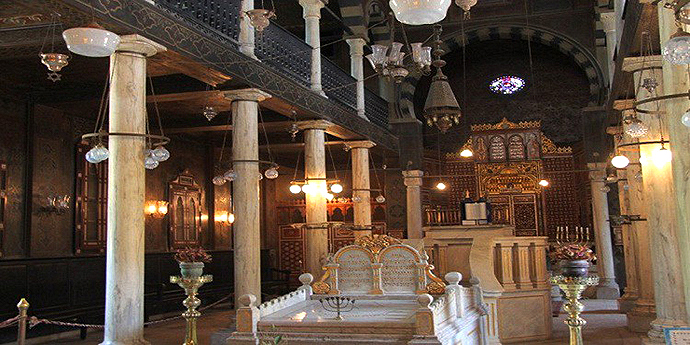
Professor Yosef Yuval Tobi talks about the Cairo Genizah and about
some references found there relating to the Jews of Yemen
Letter from Babylon about soliciting funds from Jews in Yemen
Jews of Yemen played an important role supporting the communities of Babylon and later those of Egypt too. A letter that was sent by the Jewish community in Babylon to their public emissary was found in the Cairo Genizah. In the letter, the public emissary, who was in a mission to collect funds from Jews of Avil and Chavil in Tzala and Kaatab (regions in Yemen), was asked to be proactive in collecting the finance needed. Below is a translation of part of the letter.
” …We appointed you… and we ask you to hurry, to be strong and to talk to the heart of the people to [convince them to] volunteer… and it will relieve our ‘Yeshiva’ (religious school). Since we and our scholars and… the pupils are relentlessly studying the Mishna and the Talmud…. tell the communities… and each [amount] that will be contributed, pay to Mr. Yedidya Aluf, who is in Sana’a, G-d will protect him. Or give it to Mr. Sar-Shalom, Mr. Haim and his son, G-d will guard them, since they are our judges and our public emissaries in all of Yemen and Yemama…”
Letter from Gaon of Babylon reminding Jews of Yarim, Yemen, of a pledge
In another letter that was sent by the Gaon (spiritual leader) in Babylon, to Moshe and Shlomo Bar-Said from the city of Yarim, Yemen, the Gaon complains that the members of Yarim stopped supporting the religious schools (Yeshivas) in his region. In a strong reproach he requested that they should fulfill their pledge also for the previous period and to send it to their public emissaries in Sana’a.
Letter of appeal to the Jews of Tzaada about a missed contribution
In a letter to Amram Bar-Yonatan from the city of Tzaada in Yemen, the sender complains that the members of that community have been sending their contributions to other schools and his own was skipped.
“… and you took care of our neighbors while leaving us and our schools without anything… and every year you give our share to them… ”
The contributions collected from the many Jewish communities in Yemen were gathered in the regional centers like Sana’a in the highlands or in Aden on the shore of the Indian Ocean, from which these contributions were sent to their destinations.
The spiritual leaders in Babylon at that period demanded a strict discipline from the various Jewish communities to support their religious schools and centers. Whoever refused to do so was ex-communicated. But to their credit, they put a lot of effort to keep the Jewish entity and spread religious studies and the Talmud among Jews the best they could.
Segment of a court case involving a Jewish Yemenite merchant
Below is a copy of a section of a court register, written in June 10th 1098 in Fustat, Egypt. It was copied from (http://www.genizah.org/). The original document is located in the Cambridge University Library under ID: Cambridge, CUL: T-S 10J27.4.
The document registers (the 6th session of) a court case between two partners who have a conflict about merchandise that was shipped from and to Yemen.
Expand to view a section of the document, short background and explanation of part of it.... About the Document Shelfmark: Cambridge, CUL: T-S 10J27.4 “This is a hastily written and badly preserved draft, which, as the manuscript mark indicates, forms a part of the Taylor-Schechter collection, while the other court records belonging to this lawsuit are preserved partly in the Add. Genizah series of the Cambridge University Library and partly at the Bodleian Library, Oxford. Presumably this sheet was not included when the dossier of the case was put together. After almost two months it became clear that the litigants had not succeeded in settling their accounts. They were back to the arguments put forward in the very first session seven months before. Joseph Lebdi complains: (7) When I arrived from the Land of Yemen, I stored {alt. tr.: unloaded}, (8) my goods, in the {add: dar} wakāla of Mr. Jekuthiel. (9) Much time has gone by since. I demanded he deliver to me the proceeds from the goods (10) that he had sold for me. I realized, however, that he put me off, and I was {add: irritated by this and} almost prepared (11) to make a public appeal. Instead, Lebdi went again to court, and we hear the familiar arguments, enriched by some new details, for instance, that, as a matter of precaution, the money for Jekuthiel’s pepper was sent to the Malabar coast of India in two different boats (verso, line 8), or that Lebdi’s accounts were still buried under the baskets with indigo (ibid., lines 10–11). There is no room on the sheet for signatures, and none are expected on a draft. It is evident, however, from the content of the next proceedings that this session did not end with the recording of the arguments but with the decision that the litigants had to swear a solemn oath by the {with a} Torah that each of them had acted in good faith”.
Source: Friedman, Mordechai Akiva; Goitein, Shlomo Dov, India traders of the middle ages: documents from the Cairo Genizah
Documents from the Genizah also prove that there was immigration to and emigration from Yemen throughout the centuries. Some researchers conclude that the Giat families, for example, who lived in Sana’a and in Manaka (Yemen), originated in Kordova/Spain in the 11th century. A proof for this can be found in one of the documents where a son, documenting his father’s biography, wrote (translation to English):
“…first my father came from the land of Spain to settle in Tzoan (a place in Egypt), and he was listening to G-d who told him; get up and go to the land of Yemen,… and he took from the land of Yemen a very respected and beautiful woman, and she gave birth to sons and daughters within the people of the faith”.
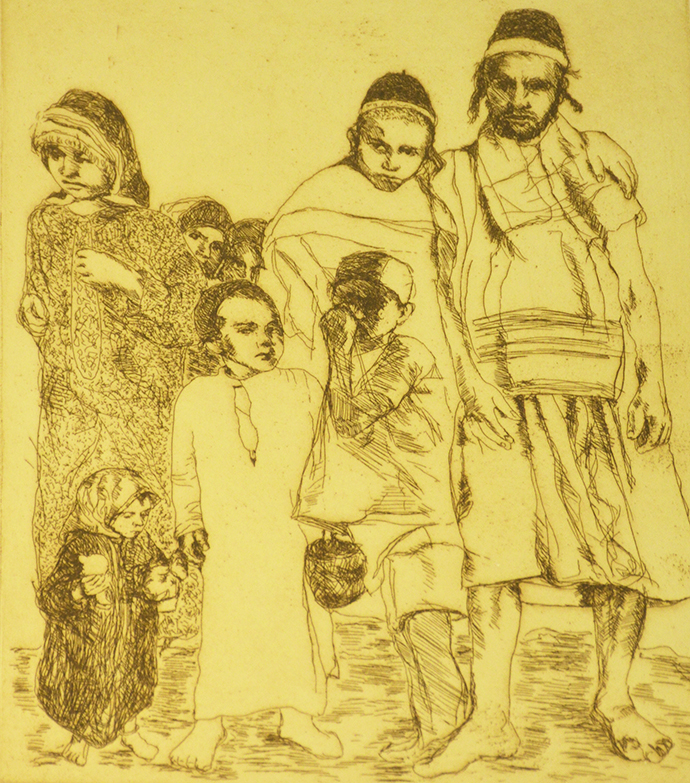
Connections of Yemenite Jews with Other Jewish Communities during the Rishonim Period between the 11th to the 16th Century CE.
Expand for an answer - Who were the 'Rishonim'?.... ‘Rishonim’ were the Rabbis and Scholars who succeeded the ‘Geonim’ as the spiritual leaders of the Jewish communities. During the period of the ‘Rishonim’, the weight of influence on the Jewish world shifted from Babylon to Europe. These Rabbis developed and enriched the Jewish books with rules and regulations based on Jewish laws and they wrote interpretations to the Talmud. Their period was important since they also paved the way for the ‘Aharonim’, a period in which the Jewish book of law called ‘Shulhan Aruh’ was written. The ‘Rishonim’ period is considered to be between the 11th to the 16th century.
The Crusader conquests of the holy land broke the continuity of Islamic control across the Middle East. Eight crusades, starting at the end of the 11th century, created turbulence and wars between Islam and Christianity for almost 200 years.
For the Jews of Yemen who maintained connections with other Jewish communities, this development would have brought stories of persecution and terror.
In Europe Jews were already being attacked as the first crusade moved toward the Holy Land, since many of the Crusaders believed that the Jews were the ‘murderers of Christ’. In 1099, the Crusader armies succeeded in capturing Jerusalem. While fighting against the Muslims, the Crusaders also burned synagogues, killed many Jews and took others as captives. Under the control of the first Crusaders, the Jewish community of Jerusalem was diminished to almost none. There are letters from the Cairo Genizah that refer to this siege of Jerusalem.
One can assume that the Jews were relieved when Salah ad-Din’s (Saladin’s) army, in 1187, overthrew the second Crusader army. Salah ad-Din was the Kurdish leader of the Ayyubid dynasty which ruled, in its prime, over Egypt, Syria, Upper Mesopotamia, the Hejaz, Yemen and other parts of North Africa. After Salah ad-Din’s successful conquest, Jews were allowed to re-enter Jerusalem and were granted a degree of freedom, although under Islam they were still considered second class citizens.
Even with these unsettling events in the background, relations between the Jews of Yemen and Jewish scholars from other communities continued to a degree. There are a number of documents from the 11th century CE, that show some of the connections and influences.
Expand for examples of influence/connections during the Rishonim Period....
Maimonides’s Epistle to Yemen (In Hebrew – Igeret Teman)
Press here for a link to Maimonides’s Epistle to Yemen (Hebrew)

The Epistle to Yemen (In Hebrew – Igeret Teman), was a communication (epistle) written by Maimonides in 1173/4 while living in Egypt, to the Jews of Yemen. It was in response to a letter from Rabbi Yaakov Ben Netan-el Alfiomi, a leader of the Jews of Yemen, who was asking for advice during the harsh times that the Jews were experiencing during that period in Yemen.
In general the practice of Islam has been known to switch from extremism to moderation, depending on its religious and political leaders. The period of the Epistle to Yemen was characterized by extreme Islamic orders, persecuting and forcing non Muslims to convert to Islam.
This difficult period triggered false messiahs to appear thus shaking the unity of the communities in Yemen even more. Confusion was added also by losing hope for salvation and by some individuals trying to find alternatives to their religion.
The importance of this epistle stretches beyond the Jewish community of Yemen. It was comprehensive and intended to strengthen their belief in their future. It dismissed other sects, new religions, false ideas for conversions, and advised them how to overcome the harsh period.
Maimonides’ influence in Yemen as well as in other Jewish communities was great, covering philosophy, religion, medicine and practically all aspects of life.
Still, not all scholars in Yemen followed his philosophy and approach. There is correspondence from the 12th century from and to Rabbi Shmuel Ben Ali Gaon from Baghdad proving that there was theoretical and practical disagreements.
Some Influential Yemenite Jews Who Traveled to Israel
Who were the Yeminite Jews who traveled to Israel and to other Jewish Communities?
Expand a name in the list to read more about some well known scholars and Rabbis:
Mori Shlomo Gibli... Mori Shlomo Gibli, one of the more important scholars of Yemenite Jews, immigrated in the 13th century with his family to Israel. He established a synagogue for the Jews of Yemen in Jerusalem. Sources for this exist in the Cairo Genizah documents.
Mori Se'adya ben David Adani... Mori Se’adya ben David Adani, arrived to Israel and Syria in the middle of the 15th century. He was a scholar and philosopher who wrote over 25 books on a variety of subjects including interpretations of biblical texts, philosophy, medicine, nature and more. Mori Se’adya adapted Sefaradic style writings as a statement for his integration in the country. He died in Tzfat after 1485.
Mori Shlomo ben Yeshua Adani... Mori Shlomo ben Yeshua Adani, arrived in Israel in 1571, lived in Tzfat and then in Hebron, where he completed his 30 year project of the interpretation for the 6 books of the Mishna called ‘Melechet Shlomo’. He died in 1624 in Hebron and there he was buried.
Rabbi Zechariah Dhahiri ... Rabbi Zechariah Dhahiri ~(1519-1589), who traveled from and to Yemen documenting his journeys to various countries, stands out as an unusual and colorful figure among the Yemenite Jews of that time. Due to difficult times that Jews experienced then, at the age of 20 he picked himself up and decided to travel out of Yemen. He went to India, Persia, Iraq, Syria, Turkey, Israel, Egypt and more. Dhahiri documented his visits and described the Jewish communities in his writings. He arrived in Israel in 1568 and visited Tzfat, Tiberias, Kfar-kana, Nablus, Jerusalem and more. Rabbi Zechariah visited Yeshivat Yosef Caro in Tzfat and described the process of studying there. He was moved by what he saw in Jerusalem, which was somewhat neglected at that period. Zechariah went to Hebron and visited Monasteries in the Kidron Wadi and after a few years he returned to Yemen, facing the war between the Turkish empire and the Yemenis, who never wanted to accept foreign rule in Yemen. Rabbi Zechariah Dhahiri became one of the leaders of the Jewish community in Sana’a and was put in jail together with the other Jewish leaders, being accused by the Yemenis of siding with the Turks in their war. Among other books, Rabbi Zechariah Dhahiri wrote the “Book of Morals” that is composed of 45 copybooks. This book contains descriptions and details of his tours, historical facts, allegories, poetry, and moral essays. It contains interesting details that teach us about life in the places he visited, including life in Tiberias at that period and about the yeshiva that was created by Dona Gracia Mendes, Mother-in-law of Don Yosef Nasi.
Mori Shalom Shar'abi Mizrachi... The great Kabbalist, Mori Shalom Shar’abi Mizrachi, immigrated from Sana’a, Yemen, in the 18th century and lived in Jerusalem. He died in Jerusalem in 1777 and was buried there in the Mount of Olives Cemetery. Rabbi Sar-Shalom Mizrachi Didia ben Yitzchak Sharabi, known as the ‘Rashash‘ was born in 1720 in Sana’a. At an early age he decided to fulfill his vow to go to the Holy Land of Israel in order to live in Jerusalem, which he did following a tour that took him through India, Baghdad, Damascus and many more places. Rabbi Sar-Shalom Mizrachi, a modest young man, was already a scholar when he reached Jerusalem. A charming story is told about him which reflects both his knowledge and his great humility. It is told that, when he arrived in Jerusalem, he approached Rabbi Gedalya Chayon who was the leader of the Beit-El Yeshiva (religious school), a center of Kabbalah study. The young Shalom Mizrachi, who was determined to keep his knowledge and spiritual abilities hidden, applied for the job of a simple caretaker (Shammash). While doing his chores he would unobtrusively listen to the Rabbi’s teachings. Each time that the Rabbi raised a question that the Yeshiva students could not answer, the young caretaker would secretly write the answer on a piece of paper and place it at night within the pages of the teacher’s books. Despite repeated demands by the Rabbi for the author of the notes to expose himself, the young caretaker did not come forward. Eventually the daughter of Rabbi Gedalya decided to hide in the Yeshiva at night to uncover the mystery. Once exposed, the young man was acknowledged by the Rabbi as a great scholar. Over time, he married the Rabbi’s daughter, raised a family in Jerusalem and was eventually appointed by Rabbi Gedalya as the next head of the Yeshiva.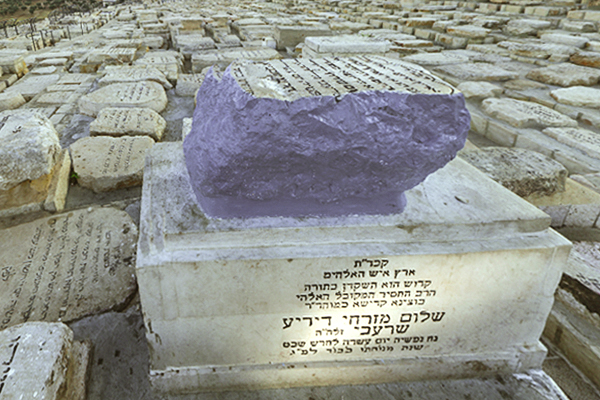
Moshe Tzadok, 20th century writer and journalist, wrote in his book, ‘Jews of Yemen – History and their life style’, about a conflict that was created during the 14th century between the Jewish community of Sana’a and the one in Tza’ada in North Yemen. The story opens a window to a different level of connections that existed between the Jews of Yemen and those in Israel and other centers.
The conflict related to the interpretation of an essay called ‘The Book of Truths’, believed to be written by one of the Tza’ada scholars, Yehuda, son of Rabbi Shlomo. The book is a study that looks at the rules and regulations of the bible and tries to explain them through allegories.
Since both communities of Sana’a and Tzaada were not able to approve each other’s interpretations, it was agreed between them that a messenger would be sent to scholars in Israel. This messenger would have the written arguments of each community in a book that would be read by the wise men who would decide whose interpretation was the correct one…
Expand to view some example of Rabbis who mention Jewish Yemenite communities in Israel... Rabbi Yehuda Alcharizi ~(1165-1225), born in Toledo Spain, was a poet, writer and a translator who completed a few journeys during in his life. In his tour to the land of Israel he visited Jerusalem and, in his documents, he describes a community of Jews from Yemen led by Rabbi Se-adya Ish Yemini. Translated quote: “… and there, from the Ashkelonites, a superb community, led by the minister Rabbi Se-adya Ish Yemini and he is a scholar, and nice, and his wisdom is countless…” Rabbi Ovadia ~(1440-1515) from Bartanora, Italy, was the head of the Jewish community in Jerusalem at the end of the Mamluk period. In a letter from 1488-9 to his brother who lived in Spain he writes (free translation to English): “… and these days there are Jews that came from Aden (Yemen)…, they say that in that land there are many and large Jewish communities, and a king of the Muslims who loves them very much is ruling them …., And these people are somewhat dark. They do not have the Talmud book, but they have Rabbi Alfasi’s (1013-1103) book with interpretations of Maimonides…. And all of them, [including] young and small are experts in Maimonides since they all concentrated on him…”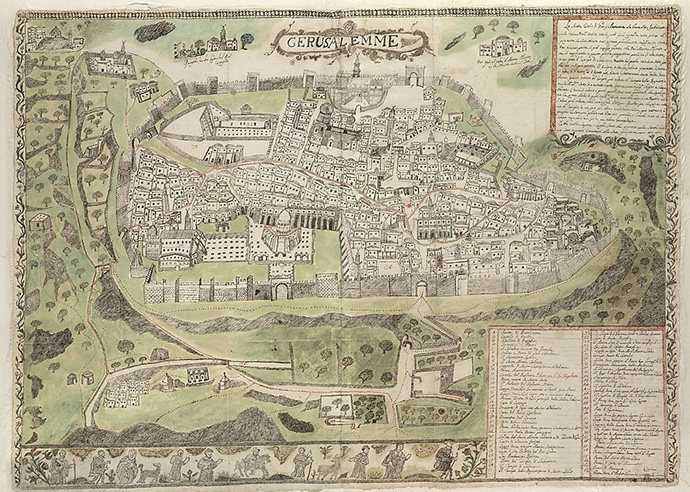
Kabbalah in Yemen – from 16th Century
What is the Kabbalah?... The Kabbalah – is a term that defines logical and spiritual activity that tries to expose the hidden truths that are believed to exist behind the things, beyond what we can recognize and experience through our senses. The Kabbalah has deep roots in ancient Jewish mysticism that has been trying to understand the process of the creation of the universe. The foundation of Kabbalah structure, as we know it today, was formed as a result of activity among Jews in Provence (South of France), in the North of Spain, and in the East Mediterranean countries, from the end of the 12th / early 13th centuries. The Kabbalah had a strong influence on Jewish life, bible studies, poetry, literature, morality and more. It was also the trigger for the appearance of some messianic movements like the ‘Shabtaut’ and like the Hasidim movement.
Kabbalah was exposed to the Jews of Yemen in the 16th century, but was the result of a process of intellectual exchange that began already many years earlier.
Professor Yosef Yuval Tobi answers the question “When did Kabbalah arrive to Yemen?”
Prof. Tobi is Professor (emeritus) of medieval Hebrew poetry at the University of Haifa, Israel and Head of Ben-Shalom Center for the Study of the Jews of Yemen in Ben Zvi Institute, Jerusalem.
Religious rituals of the Jews of Yemen were influenced throughout the centuries as a result of connections with other Jewish communities. The greatest influence, for example, was during Maimonides (1135-1204) time, since the Jews of Yemen respected him for his wisdom and since he respected the authenticity and originality of their religious rituals.
The influence typically took the form of integration of religious poetry and prayers of other communities into their ancient rituals, so long as this did not conflict with their existing versions.
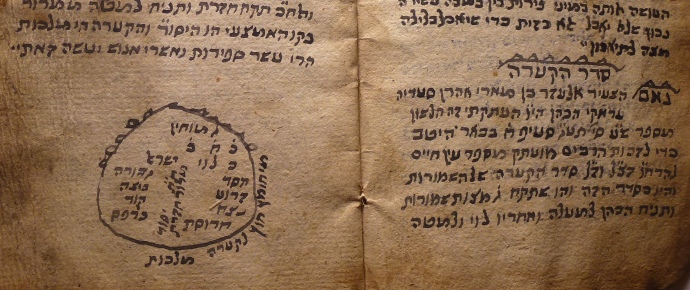
Expand to read some notes about Rabbi Ela'zar Ben Mori Aharon Sa'adia 'Iraki HaCohen.... Eliezer Ben Se’adya ‘Iraki Hacohen was a scholar and a poet who was born in the early 19th century in Yemen. In 1841, sometime after his father moved the family from Sana’a to India, Eliezer established the first Jewish printing house in Calcutta, thus accelerating the development of Jewish cultural life there. In 1856 he printed a collection of his own work called “The book of Songs”. Yaakov Sapir, during his tour to Yemen and India in the mid-19th century, stayed with Eliezer Ben Se’adya ‘Iraki and praised him and his work when he wrote “… one of… whose hands are full with the Bible and with the early interpreters… with the Halacha and with Legend… clever and fast writer… and pleasing poet in writing and singing…” (bibliography Ratzabi, ‘bemaagalot, p.112 . source ‘Encyclopedia for the elders of Yemen’, Moshe Gavra)
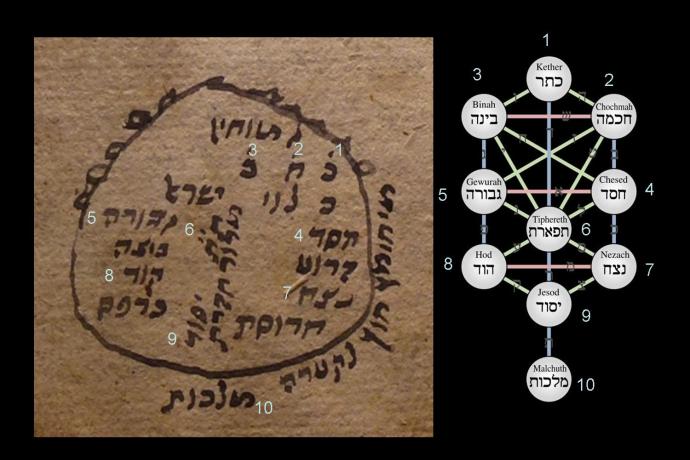
Conditions leading to a spread of Kabbalah
Jews in the Iberian Peninsula were expelled from Spain and Portugal at the end of the 15th century. By the 16th century their influence was already apparent among Jewish centers elsewhere. The expelled arrived to most of the Jewish communities in the countries along the Mediterranean basin. They expanded the communities and created a vibrant, flourishing period in culture, science, philosophy, Jewish studies and Kabbalah.
Tzfat, in the north of Israel, quickly became a spiritual center for Kabbalists who were attracted to the city where many famous scholars of Jewish mysticism had lived and taught – in particular Rabbi Shimon Bar Yohai who was the author of the “Zohar”.
The availability of books following the print revolution (15th century) also enabled the spreading of spiritual works to the Jewish communities wherever they existed. While the impact of such events took time to reach Yemen, it did not skip the Jewish communities there.
Even though Yemen was relatively far and more isolated from the other Jewish centers, individuals and small groups who commuted brought to Yemen bibles, interpretations, books in philosophy, Kabbalah and poetry, all in print.
These books constituted the base for a slow change in the ancient ritual codes that were practiced in Yemen for generations and also served as an accelerator for philosophical and Kabbalistic thinking.
Emergence of Different Trends Among the Jews of Yemen
In the ancient Jewish Yemenite book of prayers (Sidur-Hebrew, Tachlal), religious poetry was typically separated from the prayers. The Sidur was usually short and poetry was limited. Rabbi Itzhak Vena (~1575-1670), a Kabbalist and one of the most important religious figures in Yemen, is believed to be the first to have added rituals to the ancient Jewish Yemenite book of prayers.
Rabbi Vena, born and brought up in the village of ‘Maabar’ south of Sana’a, incorporated patterns of prayers that originated from other important Jewish centers and integrated religious poetry written by the famous Kabbalist Rabbi Itzhak Luria (1534-1572).
The gradual changes were not accepted among the Jewish communities in Yemen without controversy. In the bigger cities like in Sana’a, where the orthodox religious authorities were more influential, resistance for the changes was stronger than in the more distant areas.
Baladi vs Shami
Rabbi Yihye Tzalah (known as Maharitz, 1713-1805), one of the greatest Rabbis in Yemen during the 18th century, accepted some of the additions that were integrated into the ancient Jewish Yemenite prayer book. However, since he was concerned about loosing the authenticity of the original rituals and prayers, he wrote a new version that put a greater emphasis on the original ancient version of the Jews of Yemen, omitting the additions and changes that he was concerned with. In the years to come his version was defined as the ‘Baladi Version’.
The books that arrived to Yemen as a result of the ‘print revolution’ came from different locations like Italy, Israel, Egypt, Spain and more. The cheaper they became, the greater was the demand. Another reason for the increasing demand for books was the need to suffice the shortage of Jewish books that was a result of the tragedy of the Mawza expulsion where thousands of bible and prayer books were lost, burnt and stolen together with certificates and valuable documents.
Except, there was no unity in the new printed books. As a result, the Jews of Yemen were exposed to a variety of nuances of prayers and religious rituals that were practiced in the countries that they came from. These varieties were integrated at different levels by the different communities in Yemen.
Many of the Jewish communities in Yemen (like in the south of Yemen, partially in the central highlands, and areas in the north of Yemen like Tza’ada and Haidan) adopted the changes that were reflected in the books and the new spirit that they sparked. Even in the city of Sana’a certain sections of the community accepted them; still not without controversy. Years later, this variety of versions was defined under one term, the ‘Shami’ version.
In the conflict between the ‘Baladi’ and the ‘Shami’ versions, the latter prevailed. Among the supporters of the ‘Baladi’ version there was a group represented by a small branch that was called ‘Dor daim’ (or dardaim, which stands for ‘Generation of Knowledge’ in Hebrew). The dardaim originated and formed in Sana’a during the early 20th century. This group wanted to preserve what it saw as the ancient habits and original practice of the religion of the Jews in Yemen, with some additions that relate to Maimonides – additions, which the ‘Maharitz’ decided to integrate.
The ‘Dor daim’ called their opponents ‘Ikshim’ (Hebrew translation of ‘stubborn’). The ‘Ikshim’ were influenced more than the other Jewish communities by the new thoughts and practices that came with the printed books. They were in favor of extended additions and new practices in the Jewish rituals. The ‘Dor daim’ saw in this what they felt was the excessive inclination of the ‘Ikshim’ toward the changes and especially towards the Kabbalah, a form of foreign work that undermined their authentic sources.
Currently the differences between the groups are dissolving and in quite a few places one can see supporters of the two groups praying in the same synagogue. In such cases, public praying is performed according to the version of the group who owns the synagogue, while personal prayer is done by each according to his own belief.
***
Related Links:
https://www.chabad.org/library/article_cdo/aid/170308/jewish/What-is-Kabbalah.htm